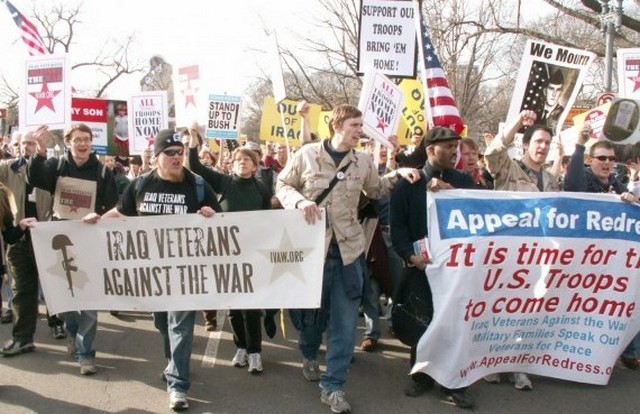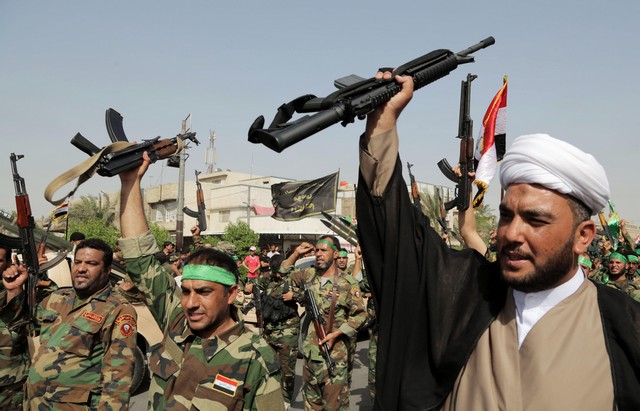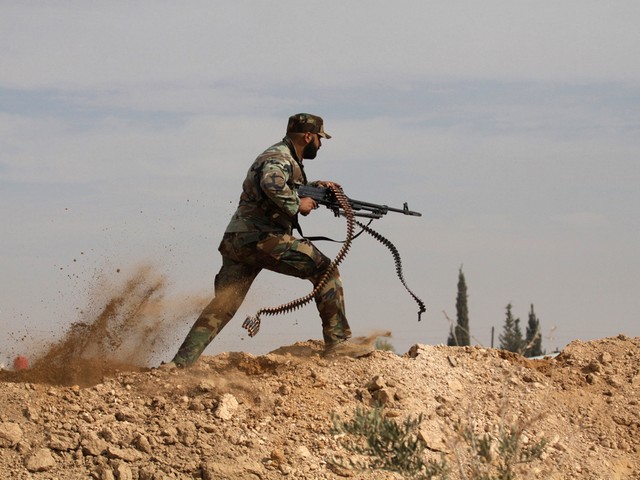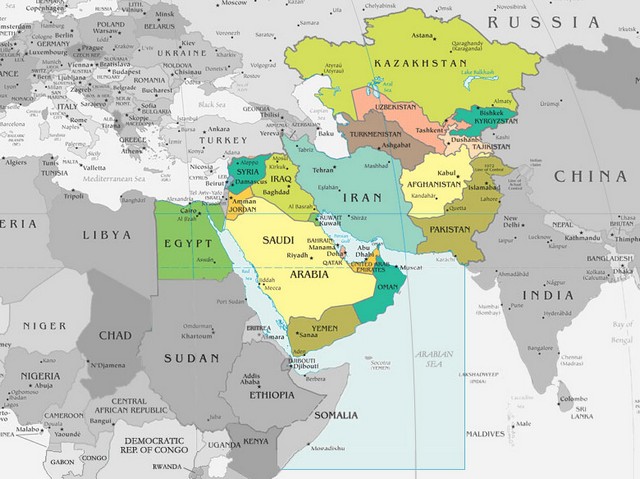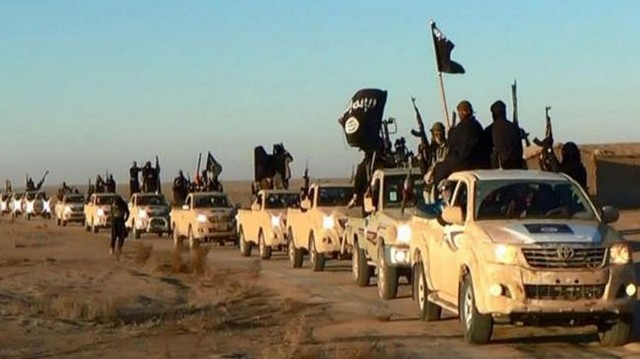By Michael Schwartz
Events in Iraq are headline news everywhere, and once again, there is no mention of the issue that underlies much of the violence: control of Iraqi oil. Instead, the media is flooded with debate about, horror over, and extensive analysis of a not-exactly-brand-new terrorist threat, the Islamic State of Iraq and Syria (ISIS). There are, in addition, elaborate discussions about the possibility of a civil war that threatens both a new round of ethnic cleansing and the collapse of the embattled government of Prime Minister Nouri al-Maliki.
Underway are, in fact, “a series of urban revolts against the government,” as Middle Eastern expert Juan Cole has called them. They are currently restricted to Sunni areas of the country and have a distinctly sectarian character, which is why groups like ISIS can thrive and even take a leadership role in various locales. These revolts have, however, neither been created nor are they controlled by ISIS and its several thousand fighters. They also involve former Baathists and Saddam Hussein loyalists, tribal militias, and many others. And at least in incipient form they may not, in the end, be restricted to Sunni areas. As the New York Times reported last week, the oil industry is “worried that the unrest could spread” to the southern Shia-dominated city of Basra, where “Iraq’s main oil fields and export facilities are clustered.”
Under the seething ocean of Sunni discontent lies a factor that is being ignored. The insurgents are not only in a struggle against what they see as oppression by a largely Shiite government in Baghdad and its security forces, but also over who will control and benefit from what Maliki — speaking for most of his constituents — told the Wall Street Journal is Iraq’s “national patrimony.”
The Deconstruction of Saddam Hussein’s Iraq
Does anyone remember what Iraq looked like a dozen years ago, when Saddam Hussein still ruled the country and the United States was about to invade? On the one hand, Iraqis, especially Shiites and Kurds, suffered under the iron heel of an oppressive dictator — who may have killed 250,000 or more of his own people during his 25-year reign. They also struggled against the privation caused by U.S.-led sanctions — some estimates at the time placed the number of sanction-caused infant deaths alone at 500,000.
On the other hand, the country had a number of successful export-oriented industries like leather goods and agricultural products like dates that offered employment to hundreds of thousands of relatively well paid workers and entrepreneurs. It also had a resilient electrical, water, and highway infrastructure (though increasingly decrepit thanks to those sanctions). In addition, it had a best-in-the-region primary and higher educational system, and the finest (free) health care in the Middle East. In a nation of 27 million people, it also had — in comparison to other countries in the area — a large, mainly government-employed middle class of three million.
These pluses all flowed from a single source: the 2.5 million barrels of oil that Iraq produced each day. The daily income from the sale of the “national patrimony” undergirded the country’s economic superstructure. In fact, the oil-based government budget was so ample that it supported Hussein with multiple palaces, enriched all his relatives and allies, and financed his various wars, both on other countries and on Iraq’s Kurds and Shiites.
This mixture of oppression and prosperity ended with the U.S. invasion. Despite denials that it would ever touch the Iraqi “patrimony,” the Bush administration went straight for those oil revenues, diverting them away from the economy and into “debt payment” and soon enough, a pacification campaign. Despite promises from Washington that, under an American occupation, production would soon rise to six million barrels per day, the struggle to take control of energy production out of Iraqi hands ended up crippling the industry and reducing production by 40%.
In fact, the occupation government was a whirlwind of economic destruction. It quickly began dismantling all government-run (and oil-subsidized) industrial plants, bankrupting the private industries that depended on them. It disrupted or destroyed commercial agriculture, again by discontinuing Saddam-era oil-financed subsidies and by air attacks on insurgents in rural areas. It imposed both austerity measures and a “de-Baathification” program on the country’s educational and medical systems.
Since most Iraqis holding any position of significance had no choice but to belong to Saddam’s Baath Party, this proved a disaster for middle class professionals, a majority of whom found themselves jobless or in exile in neighboring countries. Since they had managed such systems, often under increasingly terrible conditions, the effect on the management of the electrical, water, and highway infrastructure was devastating. Add in the effects of bombing campaigns and the privatization of maintenance and you had a lasting disaster.
When, in 2009, the Obama administration first began withdrawing U.S. combat troops, Iraqis everywhere — but especially in Sunni areas — faced up to 60% unemployment, sporadic electrical service, poisoned water systems, episodic education, a dysfunctional medical system, and a lack of viable public or private transportation. Few Westerners remember that, in 2010, Maliki based his election campaign on a promise to remedy these problems by — that figure again — increasing oil production to six million barrels per day. Since the existing production was more than sufficient to operate the government, virtually all of the increased revenues could be used to reconstruct the country’s infrastructure, revive the government sector, and rehabilitate all the devastated public services, industries, and agricultural sectors.
The Corrupt Legacy of the U.S. Occupation
Despite his obvious Shia sectarianism, Sunnis gave Maliki time to fulfill his campaign promises. For some, hopes were increased when service contracts were auctioned off to international oil firms with the aim of hiking energy production to that six million barrel mark by 2020. (Some, however, just saw this as the selling off of that national patrimony.) Many Iraqis were initially reassured when oil production began to rise: in 2011, the Hussein-era mark of 2.5 million barrels per day was finally reached, and in 2013 production finally exceeded 3.0 million barrels per day.
These increases raised hopes that reconstruction from the invasion and occupation era would finally begin. With oil prices holding steady at just under $100 per barrel, government oil revenues more than doubled, from about $50 billion in 2010 to more than $100 billion in 2013. This increase alone, if distributed to the population, would have constituted a windfall $10,000 subsidy for each of the five million Iraqi families. It also would have constituted a very promising down payment on restoring the Iraqi economy and its social services. (The electrical system in itself required tens of billions of dollars in new investment simply to restore it to inadequate pre-war levels.)
But none of this oil wealth trickled down to the grassroots, especially in Sunni areas of the country where signs of reconstruction, economic development, restored services, or jobs were hard to discern. Instead, the vast new revenues disappeared into the recesses of a government ranked by Transparency International as the seventh most corrupt on the planet.
Demanding a Share of the National Patrimony
So here’s where Iraqi oil, or the lack of its revenues at least, comes into play. Communities across Iraq, especially in embittered Sunni areas, began demanding funding for reconstruction, often backed by local and provincial governments. In response, the Maliki government relentlessly refused to allocate any oil revenues for such projects, choosing instead to denounce such demands as efforts to divert funds from more urgent budgetary imperatives. That included tens of billions of dollars needed to purchase military supplies including, in 2011, 18 F-16 jets from the United States for $4 billion. In a rare moment of ironic insight, Time magazine concluded its coverage of the F-16 purchase with this comment: “The good news is the deal will likely keep Lockheed’s F-16 plant in Fort Worth running perhaps a year longer. The bad news is that only 70% of Iraqis have access to clean water, and only 25% have clean sanitation.”
In all fairness to Maliki, his government did use some of the new oil revenues to begin restaffing wrecked government agencies and social service institutions, but virtually all of the new employment went to Shia citizens in Shia areas, while Sunnis continued to be fired from government jobs. This lack of employment — which meant, of course, the lack of oil money — has been key to the Sunni uprising. As Patrick Cockburn of the British newspaper, the Independent, wrote,
“Sunni men were alienated by not having a job because government funds were spent elsewhere and, on occasion, suddenly sacked without a pension for obligatory membership of the Ba’ath party decades earlier. One Sunni teacher with 30 years’ experience one day got a crumpled note under his door telling him not to come to work at his school any more because he had been fired for this reason. ‘What am I to do? How am I going to feed my family?’ he asked.”
With conditions worsening, Sunni communities only became more insistent, supplementing their petitions and demonstrations with sit-ins at government offices, road blockades, and Tahrir Square-type occupations of public spaces. Maliki’s responses also escalated to arresting the political messengers, dispersing demonstrations, and, in a key moment in 2013, “killing dozens” of protestors when his “security forces opened fire on a Sunni protest camp.” This repression and the continued frustration of local demands helped regenerate the insurgencies that had been the backbone of the Sunni resistance during the American occupation. Once lethal violence began to be applied by government forces, guerrilla attacks became common in the areas north and west of Baghdad that the U.S. occupiers had labeled “the Sunni triangle.”
Many of these guerrilla actions were aimed at assassinating government officials, police, and — as their presence increased — soldiers sent by Maliki to suppress the protests. It is notable, however, that the most determined, well planned, and dangerous of these armed responses targeted oil facilities. Though the Sunni areas of Iraq are not major centers of oil production — more than 90% of the country’s energy is extracted in the Shia areas in the south and the Kirkuk region controlled by the Kurds — there are ample oil targets there. In addition to a number of small oil fields, the “Sunni triangle” has almost the entire length of the only substantial pipeline that exits the country (to Turkey), a significant refinery in Haditha, and the Baiji petroleum complex, which contains an electrical power plant serving the northern provinces and a 310,000 barrel per day oil refinery producing a third of the country’s refined petroleum.
There was nothing new about local guerrillas attacking oil facilities. In late 2003, soon after the U.S. occupation cut off the flow of oil revenues to Sunni areas, residents resorted to various strategies to stop production or export until they received what they felt was their fair share of the proceeds. The vulnerable pipeline to Turkey was rendered useless, thanks to more than 600 attacks. The Baiji and Haditha facilities held insurgents at bay by allowing local tribal leaders to siphon off a share — often as much as 20% — of the oil flowing through them. After the U.S. military took control of the facilities in early 2007 and ended this arrangement, the two refineries were regularly subjected to crippling attacks.
The pipeline and refineries returned to continuous operation only after the U.S. left Anbar Province and Maliki once again promised local tribal leaders and insurgents (often the same people) a share of the oil in exchange for “protecting” the facilities from theft or attack. This deal lasted for almost two years, but when the government began cracking down on Sunni protest, the “protection” was withdrawn. Looking at these developments from a petroleum perspective, Iraq Oil Report, an online industry newsletter that offers the most detailed coverage of oil developments in Iraq, marked this as a key moment of “deteriorating security,” commenting that the “forces guarding energy facilities… have historically relied on alliances with locals to help provide protection.”
Fighting for Oil
Iraq Oil Report has conscientiously covered the consequences of this “deteriorating security” situation. “Since last year when attacks on the [Turkish] pipeline began to increase,” the North Oil Company, in charge of production in Sunni areas, registered a 50% drop in production. The pipeline was definitively cut on March 2nd and since then, repair crews have been “prevented from accessing” the site of the break. The feeder pipeline for the Baiji complex was bombed on April 16th, causing a huge spill that rendered water from the Tigris River undrinkable for several days.
After “numerous” attacks in late 2013, the Sonangol Oil Company, the national oil company of Angola, invoked the “force majeure” clause in its contract with the Iraqi government, abandoning four years of development work on the the Qaiyarah and Najmah fields in Nineveh Province. This April, insurgents kidnapped the head of the Haditha refinery. In June, they took possession of the idle plant after government military forces abandoned it in the wake of the collapse of the Iraqi army in the country’s second largest city, Mosul.
In response to this rising tide of guerrilla attacks, the Maliki regime escalated its repression of Sunni communities, punishing them for “harboring” the insurgents. More and more soldiers were sent to cities deemed to be centers of “terrorism,” with orders to suppress all forms of protest. In December 2013, when government troops began using lethal force to clear protest camps that were blocking roads and commerce in several cities, armed guerrilla attacks on the military rose precipitously. In January, government officials and troops abandoned parts of Ramadi and all of Falluja, two key cities in the Sunni triangle.
This month, faced with what Patrick Cockburn called a “general uprising,” 50,000 troops abandoned their weapons to the guerrillas, and fled Mosul as well as several smaller cities. This development hit as if out of nowhere and was treated accordingly by much of the U.S. media, but Cockburn expressed the view of many informed observers when he termed the collapse of the army in Sunni areas “unsurprising.” As he and others pointed out, the soldiers of that corruption-ridden force “were not prepared to fight and die in their posts… since their jobs were always primarily about making money for their families.”
The military withdrawal from the cities immediately led to at least a partial withdrawal from oil facilities. On June 13th, two days after the fall of Mosul, Iraq Oil Report noted that the power station and other buildings in the Baiji complex were already “under the control of local tribes.” After a counterattack by government reinforcements, the complex became a contested area.
Iraq Oil Report characterized the attack on Baiji by insurgents as “what could be an attempt to hijack a portion of Iraq’s oil revenue stream.” If the occupation of Baiji is consolidated, the “zone of control” would also include the Haditha refinery, the Qaiyarah and Hamrah oil fields, and “key infrastructure corridors such as the Iraq-Turkey Pipeline and al-Fatha, where a collection of pipelines and other facilities deliver oil, gas and fuel to the center and north of the country.”
Further proof of this intention to control “a portion of Iraq’s oil revenue stream” can be found in the first actions taken by tribal guerrillas once they captured the power station at Baiji: “Militants have caused no damage and instructed workers to keep the facility online” in preparation for restarting the facility as soon as possible. Similar policies were instituted in the captured oil fields and at the Haditha refinery. Though the current situation is too uncertain to permit actual operation of the facilities, the overarching goal of the militants is clear. They are attempting to accomplish by force what could not be accomplished through the political process and protest: taking possession of a significant portion of the proceeds from the country’s oil exports.
And the insurgents appear determined to begin the reconstruction process that Maliki refused to fund. Only a few days after these victories, the Associated Press reported that insurgents were promising Mosul citizens and returning refugees “cheap gas and food,” and that they would soon restore power and water, and remove traffic barricades. Assumedly, this will be funded by upwards of $450 million (of oil money), as well as gold bullion, reportedly looted from a branch of the Central Bank of Iraq and assorted other banks in the Mosul area.
The oppressive regime of Saddam Hussein was racked with insurgency, and when vicious repression failed, it delivered a portion of the vast oil revenues to the people in the form of government jobs, social services, and subsidized industries and agriculture. The oppressive United States occupation was racked with insurgency precisely because it tried to harness the country’s vast oil revenues to its imperial designs in the Middle East. The oppressive Maliki regime is now racked with insurgency, because the prime minister refused to share those same vast oil revenues with his Sunni constituents.
It has always been about the oil, stupid!
Michael Schwartz is a Distinguished Teaching Professor, Emeritus, of sociology at Stony Brook State University.
24 June, 2014
TomDispatch.com




